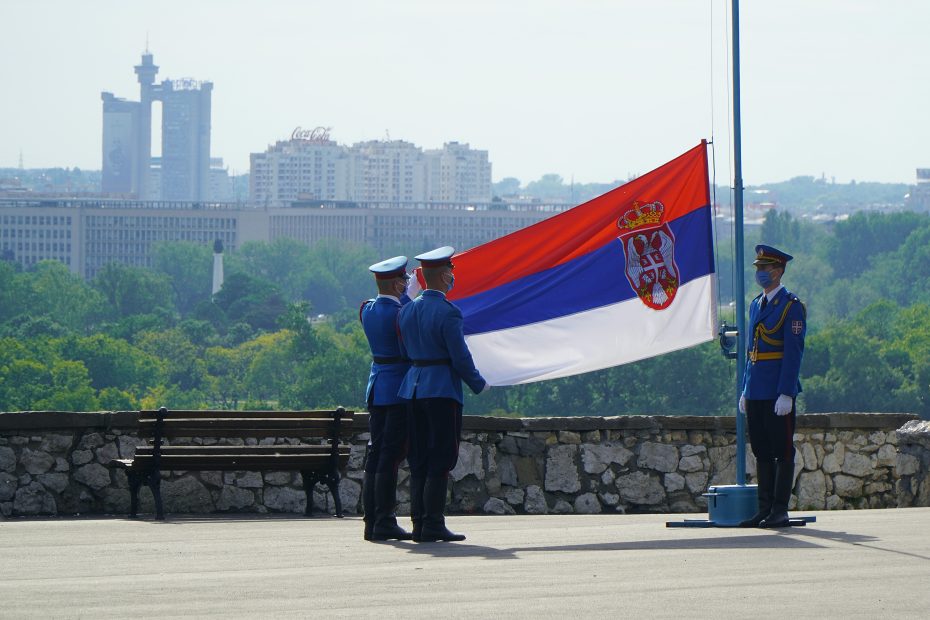Table of Contents
Introduction
Serbian cuisine is a delicious melting pot of various cultural influences from the Balkans and Mediterranean regions. The food culture here reflects the country’s diverse landscapes, from fertile river valleys to rugged mountains. Hearty meat dishes, creamy cheeses, flavorful grilled vegetables, and complex seasonings using paprika and peppers characterize this rustic, satisfying food. Whether it’s grilled meats, stews, pastries, or colorful salads, Serbian gastronomy promises a mouthwatering culinary experience.
The climate and terrain of the different regions of Serbia shape the local crops and livestock. Northern areas rely more on corn, potatoes, pork and root vegetables. Central Serbia is known for spicy peppers and barbecue. Coastal areas use more seafood and Mediterranean ingredients like olives and grapes. Regardless of region, certain items like bread, meat, yogurt and brandy are staples of every Serbian table.
Let’s explore some highlights of traditional Serbian cuisine and ingredients that make it unique. From flavorful appetizers to sweet treats, this gastronomic adventure will uncover the rich culinary traditions of the Balkans.
Traditional Dishes and Appetizers
No Serbian meal is complete without some čevapi and pljeskavica to kick things off. Ćevapi are grilled skinless sausages made from minced beef or pork. They are shaped into little finger-sized cylinders and full of juicy, savory meatiness. Pljeskavica is essentially a grilled burger patty seasoned with garlic, pepper and spices. Both are served with roasted peppers, onion and ajvar, a creamy red pepper condiment. This flavorful trio is the perfect introduction to Serbian barbecue.
Breads and Pastries
From flaky rolls to layered pies, carbs are a key component of Serbian cooking. Lepinja is a soft, round bread typically served with grilled meats. Burek is a savory baked good with layers of filo dough and fillings like cheese, spinach or meat. Gibanica takes it up a notch, with sheets of filo alternating with cheese and kajmak for a decadent multi-layered cake. These oven-fresh breads and pies are Serbian bakery perfection.
Soups and Stews
Serbia’s cold winters call for hearty, warming soups and stews. Pasulj is a popular staple made from beans, meat and veggies. Slow-cooked all day, it’s filling comfort food. Sarma are cabbage rolls stuffed with minced meat and rice, simmered in a sauce. Rich and boldly flavored čorba soups made from meat broths are a typical starter to any big meal. From meat and veggies to beans and dumplings, Serbian soups promise deliciousness in every spoonful.
Grilled Meats
Smoky, char-grilled meats are one of the highlights of Serbian cuisine. Small kebabs called ćevapčići are a staple menu item and street food. Mixtures of pork, veal and beef lend complexity. Raznjići are chunks of pork, lamb and chicken roasted on a skewer over an open fire. No part of the animal is spared from the grill – veal or pork ribs cooked slow over coals emerge juicy and full of smoky essence.
Sides and Salads
Grilled meats wouldn’t be complete without classic Serbian sides like mixed salad, kajmak and urnebes. Cucumber and tomato salads tossed in oil and vinegar provide freshness alongside rich meats. Kajmak is a creamy dairy product similar to clotted cream, used as a condiment or in pastries. Urnebes is a iconic Serbian salad made from roasted peppers, garlic and cheeses like feta. These sides add the perfect balance of colors, textures and flavors.
Desserts
A good Serbian meal deserves an excellent dessert like baklava, krofne or palačinke. Baklava is the familiar layered flaky pastry with honey, imported from the Ottoman empire. Krofne are airy doughnuts often filled with jam or chocolate. Palačinke are thin crepe-like pancakes rolled up with sweet fillings. Traditional or modern, Serbian sweets satisfy any craving.
Drinks
Wash it all down with some strong rakija, smooth Serbian coffee or fermented boza. Rakija brandy comes in various fruit flavors like plum, apricot or honey. Sipping the strong, fruity liquor is a national pastime. Strong, aromatic Serbian coffee is served in small cups with sessions lasting for hours. Boza is a unique sweet, tangy fermented wheat drink enjoyed in winter. The beverage choices are as bold and varied as the cuisine.
Conclusion
This gastronomic adventure has highlighted some of the diverse flavors that make up Serbia’s culinary identity. Whether it’s rich stews, sweet and savory pies, flavorful grilled meats, or decadent desserts, Serbian cuisine offers an appetizing blend of Balkan, Mediterranean and European influences. The hospitality, warmth and love of good food make dining here a treat for all the senses. From funky fermented drinks to perfect pastries, Serbia’s culinary creativity shines through in every dish.
FAQs
What are the must-try Serbian foods?
Some must-try Serbian foods include ćevapi, pljeskavica, burek, sarma, gibanica, pasulj, roasted meats like veal ribs, ajvar, kajmak, and Serbian sweets like baklava.
What ingredients are commonly used in Serbian cooking?
Common ingredients include meat like pork, beef, lamb, garlic, onions, peppers, potato, cabbage, beans, yogurt, filo dough, cheese, eggs, honey and seasonal produce. Spices like paprika, black pepper and mint are also popular.
What are some traditional Serbian alcoholic beverages?
Rakija fruit brandy, wine and boza are traditional Serbian alcoholic drinks. Rakija comes in many fruit flavors like plum, quince or apricot. Red and white Serbian wines are produced locally. Boza is a mildly alcoholic fermented wheat beverage.
What is a Serbian meal like?
A typical Serbian meal starts with appetizers like ćevapi, cheeses, ajvar or a soup. The main course features a meat dish accompanied by salads, bread and roasted vegetables. Gibanica, baklava or palačinke are popular dessert choices, followed by coffee or rakija.
What regions of Serbia are known for their cuisine?
Southern Serbia is known for grilled meat dishes. The northern Vojvodina region is acclaimed for its Hungarian and Austrian-influenced cuisine. Central Serbian cuisine relies on flavorful peppers, pork and their famous roasted pepper condiment, ajvar. Coastal areas utilize more seafood, olives and Mediterranean ingredients.
